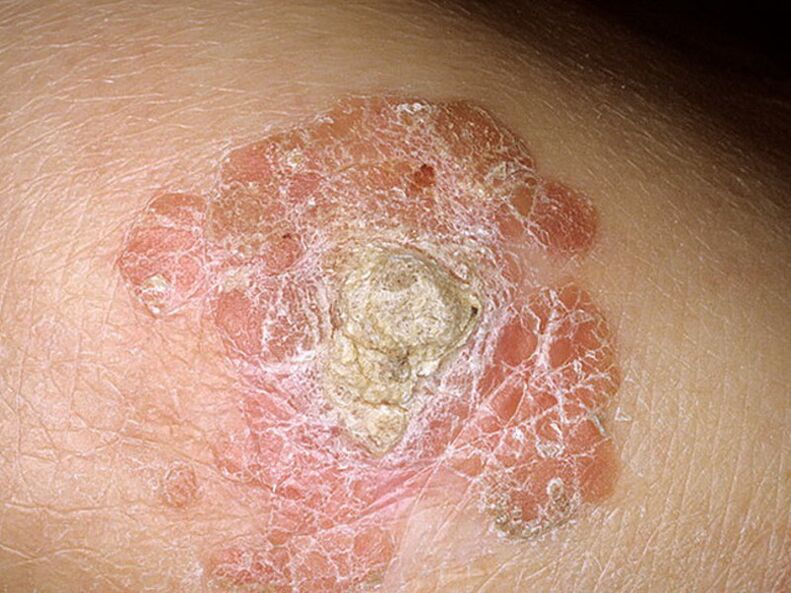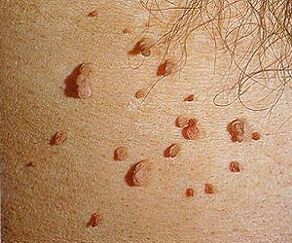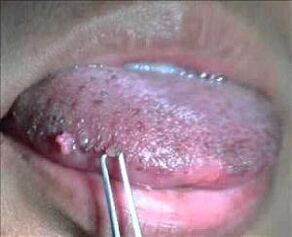
Papillomavirus is a group of viruses in which there are about 24 subgroups. To date, about 600 species have been discovered. It is only transmitted from person to person. The problem of diagnosing and treating human papillomavirus (HPV) is facing many people and doctors. The virus is capable of triggering tumor processes, it is found on the skin, in the esophagus, on the mucous membranes of the mouth, in the bronchi, the conjunctiva and even in the rectum.
Causes of occurrence and modes of infection

Human papillomavirus is a very common disease transmitted by:
- during intercourse;
- by touch, kissed;
- through scratches or cuts when visiting the pool, bathhouse, public restrooms or gym;
- by shaving or epilating.
Statistics say that even with one partner, women become infected in 20% of cases.
About 70% of the population are ill and carry HPV. The virus is especially actively transmitted from patients who have warts on the body (it is this virus that causes them to appear) in the form of pointed or flat uneven growths on the skin and genitals. In medicine, they are called warts and papillomas.
Possible infection of newborns from the mother during childbirth. In babies, the disease manifests itself in the form of growths in the throat or on the genitals.
Symptoms and development of the virus
The latent period (incubation) of the disease can last from two weeks to several years. At present, there are no visible signs of the virus.
The appearance of warts on the skin can occur gradually and one at a time, but it is also possible that many condylomas or papillomas grow rapidly at once, resembling sea cabbage in shape.
If the infection occurred sexually, the human papillomavirus manifests itself in women:
- in the area of the labia;
- vagina;
- cervix;
For men:
- around the head of the penis;
- on the skin of the genitals.
When partners are carried away by oral sex, the mucous membranes of the mouth and throat are affected, for lovers of anal sex - anus, rectum.
Men rarely suffer from the disease, although they may be carriers of it. When examining spouses, the virus is found more often in women.
Awareness!If there are any suspicious growths, consult a doctor immediately, as some types of viruses regenerate neoplasms, causing cancer.
Classification and types

To date, about 600 types of the virus have been detected. They are mostly harmless and disappear within two years after infection in the presence of normal immunity.
However, about 40 species are dangerous to humans and cause neoplasms, both benign and oncological.
In the 80s of last century, doctors proved the link between HPV infection and cervical cancer.
The following types of viruses are classified according to the site of skin lesions and varieties:
- plantar;
- "butcher warts";
- ordinary;
- flat.
About the genitals:
- genital warts;
- flat, provocative changes in the surface of the membrane of the cervix and causing oncology;
- papillomas that cause cancer of the genitals and anus, both women and men.
Other types:
- damage to the oral mucosa;
- papillomas of the respiratory tract;
- tumors of the neck, head, lungs.
Sort:
- Simple papillomas appear on the back of the palms, and in children they can grow on the knees. They look like rough growths in the form of cones.
- Plantar - disturb the gait, look at the beginning as shiny growths, then grow into a wart with an edge at the base. Growing, they form a whole bunch of similar formations.
- Flat - the color differs slightly from the skin, but causes itching, redness, discomfort.
- Filiform. In medicine they are called acrochords. They occur more often in people over 50 years of age. To begin with, the yellowish buds resemble, grow and form outgrowths up to 6 mm.
When warts appear in visible areas, a sick person can go to a medical institution for diagnosis and treatment. It is more difficult to determine the defeat of the cervix or vagina, especially if women neglect to visit the gynecologist.
Virus diagnosis
If suspicious growths occur on the skin or mucous membranes in the form of papillae-like (warts) or uneven, uneven warts, you should definitely seek medical attention. Warts do not cause cancer as often as flat papillomas, but they are best removed to reduce the risk of infecting those around you.
Due to the possibility of cancer development, such neoplasms are being investigated.
The doctor takes an analysis for the human papillomavirus - scraping from the surface of the mucous membrane (colposcopy with damage to the cervix - examines the mucous membrane under severe enlargement) or skin. The sample is examined under a microscope for changes in tissue structure (dysplasia), as well as determination of virus type.
Cervical smears are divided into 5 classes according to the results of a cytological examination:
- no changes;
- changes are caused by inflammatory processes;
- there are minor changes in the structure of cells, histology is required;
- cells with signs of malignant changes were found;
- there are many cells with signs of cancer.
Histological examination provides a more detailed picture of changes in the structure of the tissue.
Clinics use special HPV tests that allow you to get more accurate test results. A positive test result indicates the presence of malignant processes in the tissue.
HPV is at high oncogenic risk. A high risk of cancer is due to human papillomavirus types 16 and 18, which are found in 70% of study cases.
Based on the results of the examination, a diagnosis is made and treatment is prescribed.
HPV treatment methods

How to treat the human papillomavirus? In connection with the decrease in immunity caused by the disease, doctors prescribe primarily drugs that increase it:
- interferons;
- interferonogens.
But the main remedy is the mandatory removal of neoplasms by the methods of modern cosmetology:
- diathermoelectrocoagulation;
- cryodestruction ("cauterization" with liquid nitrogen);
- laser removal;
- radio or chemical treatment;
- introduction of immunostimulants or immune modulators into growths.
In each case of the disease, the types of treatment should be determined by a specialist.
If, according to the results of the study, there are no pathological processes in the skin, only papillomas with a small area of the skin around are removed. If malignant cells are detected, the operation can capture a significant area, depending on the depth of the lesion.
Folk methods and recipes
How to cure the human papillomavirus? At all times, traditional medicine has helped to fight diseases. Experience in treating HPV is also quite extensive.
Remedies recommended by traditional medicine. You can lubricate warts:
- celandine juice;
- juice of sour apples and their pressed residues;
- dandelion juice;
- ammonia.
Proven recipes:
- Prepare an infusion of chaga, celandine, string, freeze it and apply ice cubes 3-4 times a day.
- Grease with castor oil, then cover with a cloth. Usually 5-6 such procedures are enough.
- Petroleum and walnuts. Grind unripe nuts in a meat grinder, then mix: for 1 part nuts - 2 parts petroleum, the mixture must be infused for three weeks. Apply on warts twice a day.
To increase immunity, herbalists recommend drinking
- potato juice,
- echinacea infusion,
- hyben te.
Herbal collections:
- dandelion roots, stinging nettle, lemon balm, horseradish, plantain;
- wormwood, St. John's wort, tricolor, dill (seeds), calamus (roots), clover (flowers), plantain.
HPV treatment at home
You can remove papillomas at home using drugs sold in pharmacies:
- Special composition that freezes warts. It should be applied carefully so that it does not get on healthy skin. After the procedure, in about a week, the growths will disappear and leave no trace.
- Treatment with adhesive strips. Takes only 3 hours. However, it can cause unpleasant or painful sensations when torn off.
- Dilute 2, 5 grams of aspirin powder, the same amount of iodine, 2 grams of boric acid in 100 ml of alcohol and butter papillomas with this composition.
Prevention of infection
And yet, do not forget the viral nature of the appearance of unpleasant growths. Removal of papillomas from the surface of the skin, it will not be possible to get rid of the disease. Therefore, you should see a specialist to prevent degeneration of neoplasms for cancer. It is not yet possible to completely cure HPV, but you can take steps to avoid becoming infected.

To prevent this, you need:
- use condoms for casual sex. The condom does not completely protect against HPV infection, as it does not cover the entire surface of the skin upon contact, but nevertheless partially helps to prevent the spread of infection.
- Avoid visiting baths, pools, toilets, even with the smallest wounds on the skin.
- Children are vaccinated against cervical cancer, which is caused by the HPV virus. Girls 11-12 years are vaccinated. The results of vaccination showed a reduction of this disease in women receiving the drug.
Have you found a wart or a suspicious growth on your body? Contact a competent specialist and follow all the recommendations. HPV can sometimes be very dangerous. Learn about treatment and removal methods and take action!














































































